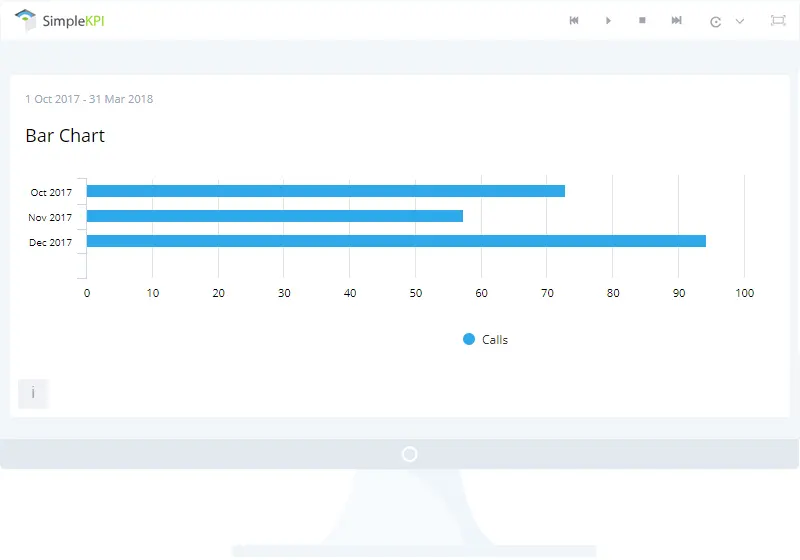What are Bar Charts?
Bar charts are a great way to display and compare Data, Metrics or Key Performance Indicators across categories. Bar charts use graphical bars running parallel to a horizontal axis to show values proportional to other bars in the chart. The x-axis and y-axis of this charts typically show time and groups, however other examples can include ranges.
Bar graphs are the most commonly used charts on KPI Dashboards and Reports. Their simple structure allows the quick and efficient comparison of values across groups or categories far easier relative to other chart types.
The different types of bar charts
The term 'Bar Chart' normally refers only to the horizontal version of the chart. However, the term is sometimes used as a catchall for similar variations that also use bars to visualize data. Within this category you may find:
Stacked charts that display a breakdown of values within the bars in a single column.

Grouped Bar charts that use a series of bars grouped together against other grouped bars.
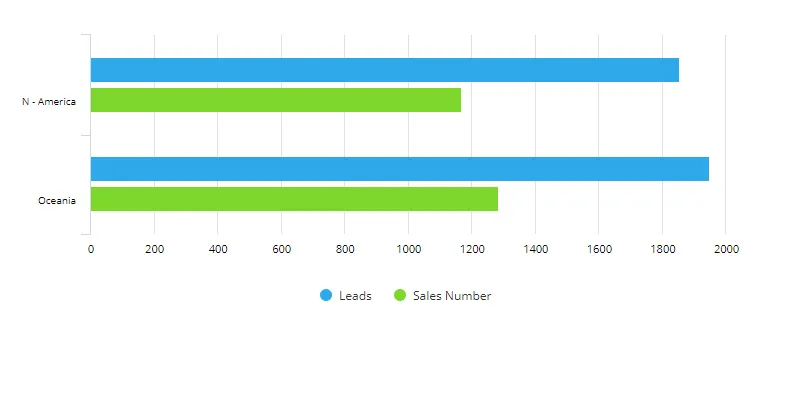
Histograms that typically uses ranges such as age, gender or social groupings on either axis.

Column charts that display bars running from the x-axis up to define the values.
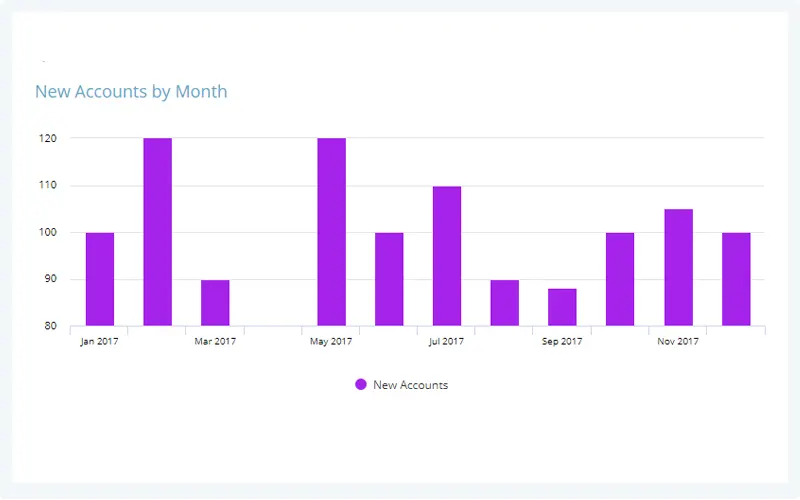
Bar Chart Examples
Examples are the best way to see how bar charts are typically used in different scenarios, here are a few examples detailing the most common uses of this chart type:
Simple Value Comparisons
Using a chart to show the difference between unique visitors across various social media channel. This simple example uses the x-axis to show the number in millions of visitors, and the y-axis to define the different channels.
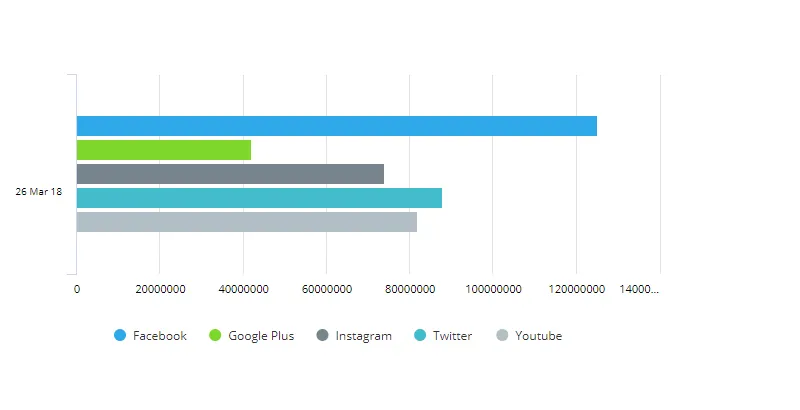
Charting Groups
Comparisons between different groups performance across the same categories can also be achieved with this chart, for example you can see the difference in sales across different stores for the same products.
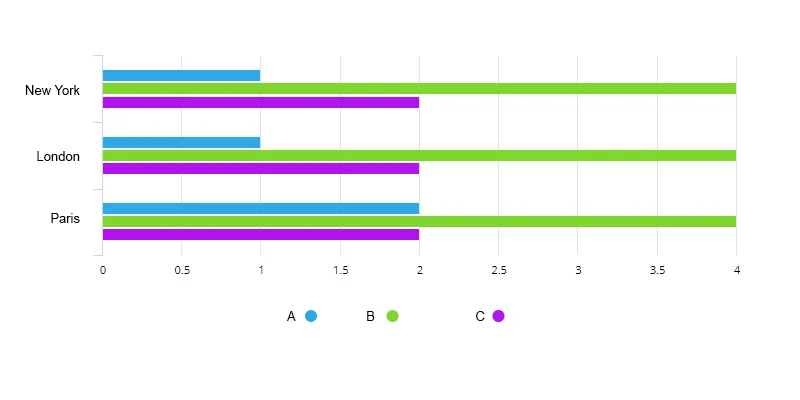
Charting Over time
This chart offers an addition dimension to the groups variation by displaying different value series for the same country by year. This chart type is good way to see more in-depth time comparisons without reverting to a different chart for each year.
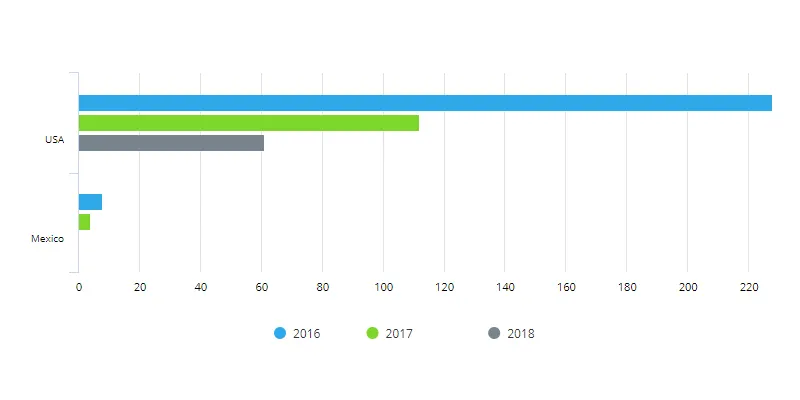
Negative Values
Negative values may be used in a bar chart. For example, certain data and values such as temperature variation or changes in profit between different product lines.
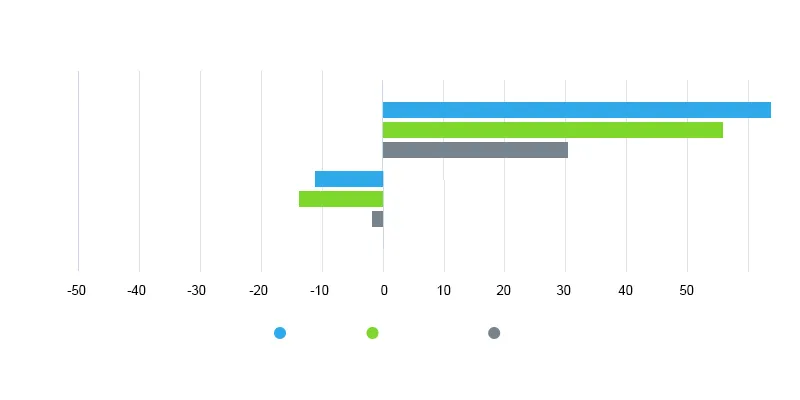
Best Practice for using bar charts
All charts have situations where they are more suitable for getting the message across, visualizing the data better or simply just more compact, here's a few guidelines for effective use of charts on dashboards to help you get the most from this chart type:
- Use the full axis to avoid distortions in representations.
- Use meaningful and direct labels, avoid abbreviations.
- Explain the chart in the title, if more explanation is needed consider using additional labeling or text boxes via links.
- Avoid using legends if you only have a single category.
- Use a consistent color themes throughout the charts, especially when more than a single category or groups is being compared.
How to use Bar charts in SimpleKPI
Setting up bar charts in other KPI Software applications can be a confusing and time-consuming process. SimpleKPI makes the steps as straightforward and as simple as possible. By first selecting the KPI, then the date range a bar chart can be added to a dashboard within a few clicks. Customizing the graphs can be achieved by changing a series of options such as colors, sizes, axis scales and filters.
More on setting up and customizing bar charts can be found here:
